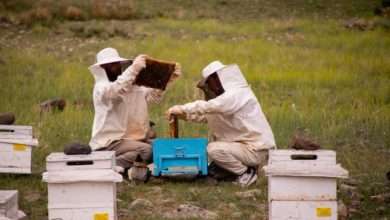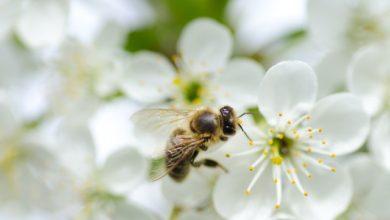What is a Hopelessly Queenless Hive?
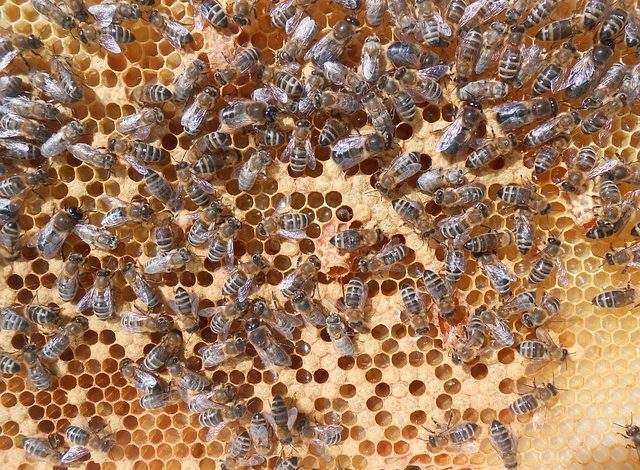
What is a Hopelessly Queenless Hive?
A situation where there is no viable candidate for queen develops. When there is no chance of a new queen being born and raised in the Colony, since no fertile larvae are in the hive and the queen has either died or disappeared, the Colony will only produce new queens for some time.
A common rookie mistake for beekeepers is failing to see signs that a settlement has lost its queen. You are ignorantly succeeding. Hummingbirds and bees are in the air. Everything is how it should be, as well as the spotless cleanliness of the outbuildings. If you do that, you could start to see a change. your settlement.
Signs of a Queenless Colony:
- Population Decline.
Between a million and a hundred thousand bees may be found in a typical hive. While you can’t count the bees in your pack, you may get a sense of the usual after observing them for a while.
Yet, new bees are born daily to replace the ones that perish. As honeybee populations crash, the queen may have abandoned her duties of producing eggs to replace the lost workers.
- Brood and Eggs Have Gone Missing
If eggs are there, you know a queen has deposited them within the last three days since she will do so daily during nectar flows. In the case of uncapped cells containing bee larvae, the queen must have deposited the eggs no more than nine days ago.
Cocooned, fully-developed larvae indicate that the queen deposited eggs no more than 20 days ago. If your hive lacks all these characteristics, it likely has been queenless for at least three weeks.
- Honey and Pollen Stored in the Brood Nest
Each worker bee’s first duty is to take on the role of a nursing bee. They immediately switch from caring for eggs and larvae to guard duties and subsequently to food hunting.
Since they are no longer required to perform their nursing duties, more bees can forage for food. These extra bees need a place to store the pollen and nectar they collect, so they put them in combs previously reserved for brood.
- Queen Cells Present
When a colony’s queen dies or disappears, the surviving members work to produce a new one. Constructing Queen Cells is the Means to an End. But it’s important to remember that the presence of a queen cell in your hive does not guarantee the absence of a queen. But, if you find a queen cell in your pack but no brood, your Colony has likely been wiped off.
If you come across a queen cell, see if you can guess what stage it is in. Could there be an egg or larva inside? Does it have a cap, or did it have one in the past? Whether your hive is growing a new queen or is queenless, this is the way to tell.
- In a Single Cell, There May Be More Than One Egg
The queen is an expert at laying eggs and knows where to put each. Workers in a hive without a queen may start producing eggs. A worker bee will deposit eggs anywhere she pleases, and there will frequently be more than one egg in a cell. More than one egg in a cell or eggs on pollen bread indicate a queenless hive.
If your workforce suddenly starts reproducing, you’re in great danger. Whenever you introduce a new queen, they get very hostile. After inspecting the hive, a previously cautious colony may surge to defend it.
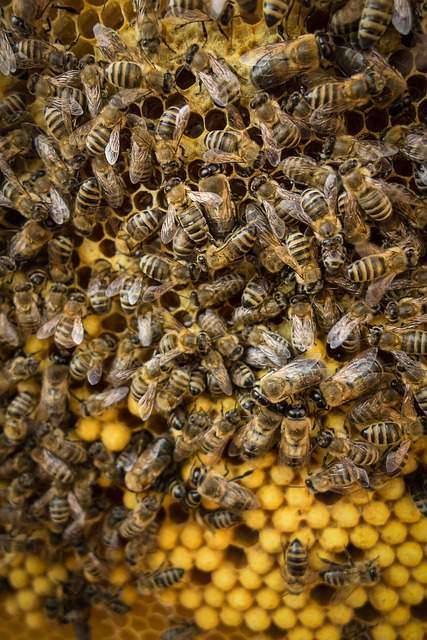
At this point, most beekeepers would get rid of the Colony, shake out the bees, and start with a fresh Foundation. When aggression is present with a shortage of brood, it’s a good indicator that the hive is missing its queen.
- High Drone Population
Having no queen or having a queen that lays infertile eggs, a huge number of drones indicates that the hive is overpopulated with drones. Pregnant workers are increasing the number of unwanted drones by depositing infertile eggs.
- Queenlessness
More than one of the symptoms above is often present in a queenless colony. You should check whether your Colony is queenless if you find just one. Bringing in a frame of young brood from another colony is quick and easy. If the bees start making queen cells on it, likely, you don’t have a queen in your Colony.
How to Fix a Queenless Hive
Being without a queen is a serious matter. Fortunately, there are numerous routes you may take to fix the problem.
What can you, as a beekeeper, do if you discover that your beehive has no queen?
- Provide Worker Brood
If you’re getting into beekeeping, it’s best, to begin with, two colonies rather than one. Similar to borrowing a cup of sugar from a friend, a queenless hive may need to arrange for a brood loan.
A worker’s primary duty is to her sister; they are built for this. And pheromones are one way that nature ensures they don’t stray from their duties.
It soothes the females, prevents them from feeling the need to lay, and, if you’re lucky, they’ll raise a new queen from your introduced brood. To get the employees back on track, keep increasing the every three to five days for a week or more.
- Requeen the Hive
Raising your queens to deal with issues like these is a skill that can be honed with time and experience. It may be necessary to acquire a queen if you still need to possess one. This can help you eliminate the issue quicker than if you gave them a brood.
It takes a queen bee about 14 days to mature from a larval stage. She then needs a week to prepare for her first mating flight in.
Depending on the outcome, she may require several dates before she’s ready to settle down.
Afterward, she has to prepare her body ready for the ultimate duty of her life: producing eggs. This takes another two days or more, so you won’t know whether the Colony successfully placed a new queen for nearly a month.
You may check with your local beekeeping club to see if any members are raising and selling queen. If that is not an option you may purchase queens through the mail and they will be sent overnight.
If the workers have already begun producing eggs, they may eliminate the new queen if you bring her to the hive. If you’ve identified the issue early on, this fix has the highest chance of success.
Place the caged queen inside the hive to see how the Colony reacts. Most beekeepers will leave the new queen in her cage for 3-4 days. The bees will quickly fan their wings to disperse the queen’s scent if they are in a hurry to find one and make her their leader.
Remove the queen if you see the bees trying to sting the cage.
- Combine Queenright Colony and the Queenless Colony
It will help if you use extreme caution before proceeding with this plan. It may take the queenless hive some time to adjust to the presence of a new queen’s smell. Hence, to begin with, you need to guarantee a mesh separating the nuc from the queenless Colony. After a few days and the worker bees have become accustomed to the queen’s scent, the barrier can be taken down.
- Abandon the Colony
When the effort required to make the Colony suitable for a queen is too great, it may be best to dispose the Colony.
If you discover that the hive contains laying workers, this is extremely important to remember. If honey is present, you may give it to another colony and shake the bees out by moving the hive to the apiary’s edge.
Others may try to find safety in one of the neighboring hives.
The inevitable death of the majority of them is to be expected. Just pack up your Colony and start afresh.
The Length of Time a Hive Can Go Without a Queen
Many beekeepers who discover their hive in this predicament wonder how long it can survive without a queen. As each Colony is unique, there are a variety of possible responses to this question.
Is it possible that she passed away due to advanced age? In such case, your Colony will likely have less time than others. This is because sperm supplies in older queens might deplete. As a result, none of the eggs she lays in her last cycle will be fertilized, and hence no new queens may be produced from them.
If this pattern isn’t seen before the queen dies, the workers won’t have time to create supersedure cells, so a new queen may be hatched from the brood.
If, however, you happen to crush her when she was at the height of her power, the workers will be able to raise a new queen from the current brood, and you’ll have a productive monarchy in weeks. Detection at early stages is crucial.
Final Thoughts
The absence of a queen is one of the most prevalent reasons for colony loss, especially for beekeepers just starting, but the solution is relatively straightforward.
Most colonies are self-sufficient and can successfully replace their queens without your participation. If they need your assistance, you know what steps to take.
Frequently Asked Questions
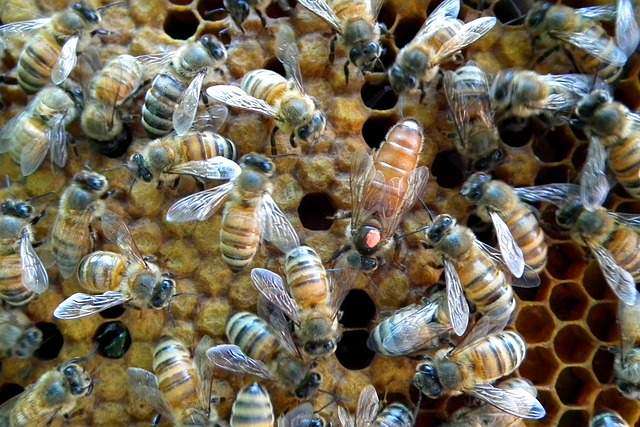
- How long does it take for bees to realize they are Queenless?
The worker bees in the hive promptly notice the queen’s absence, partly because the queen does not produce enough pheromones. Every colony member will become aware of the lack of the queen bee during the next 15 minutes to two hours.
- Will a queenless hive accept a new queen?
Generally, a colony that has been queenless for an extended period is anxious for a new queen. As a result, they are willing to accept any available candidate. But there is always the potential of rejection, so you should consider this strategy before attempting it.
- Will a queenless hive build comb?
While worker bees are not reared in the combs constructed by bees without a queen, reproductives are—constructed of Combs in both Queenless and Queenright Colonies. Queenless colonies have fewer comb areas produced by workers than queenright colonies, but the comb is still formed.
- What does a queenless hive sound like?
The drones and workers in a hive without a queen are likelier to show nervousness, anxiety, and irritability than otherwise. Sometimes, one may hear a sound like a cross between a high-pitched whine and a low-sounding roar.
- Are queenless hives more aggressive?
There is often greater hostility or, more appropriately, defense in a queenless colony. It will eventually collapse unless the Colony can successfully produce a new queen.
- Will a queenless hive swarm?
It’s conceivable, but I want to know if it will happen. Without a queen, they will not swarm. A colony with a virgin queen will swarm.
- When a hive loses its queen, how long does it take to produce a new one?
To produce new queens, the bees in the queenless Colony will rear these larvae. This procedure requires strict monitoring. The bees will start those queens within 24 hours. A queen is created in as little as sixteen days.
- Will a queenless hive bring in pollen?
A queenless colony may cause the bees to become discouraged and bored, so the workers will bring in pollen out of desperation or readiness to do anything beneficial. On the other hand, they won’t carry in a significant quantity of pollen.
- What’s a laying worker?
The ovaries of a worker bee begin to develop into fully functional ovaries in a process called “laying” when the worker bee reaches sexual maturity. These eggs are always haploid (containing just half the genetic instructions) since they have never been fertilized.
Hence they always mature into drones. As drones can only transmit their mother’s DNA, this is an incomplete representation of the hive’s genetics at best, but it’s better than nothing if the alternative is extinction.
